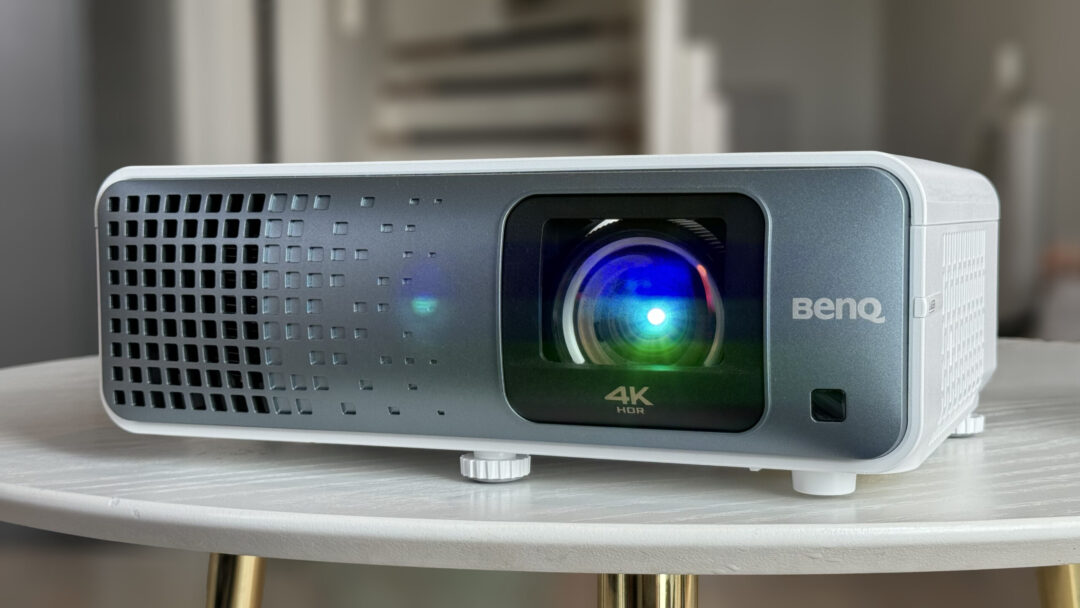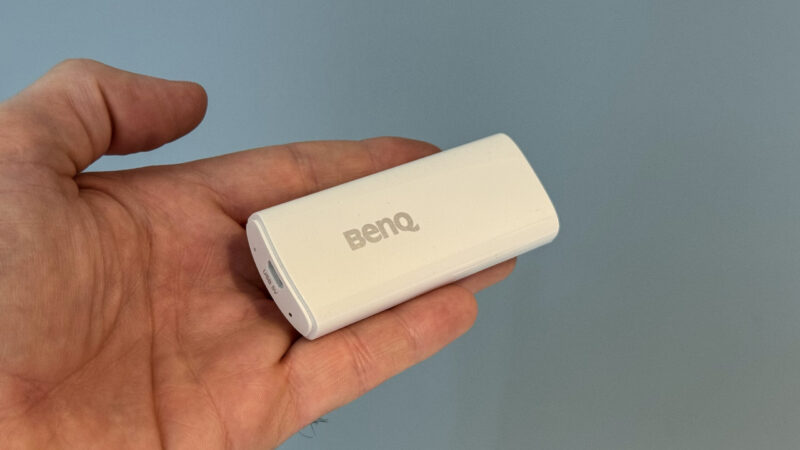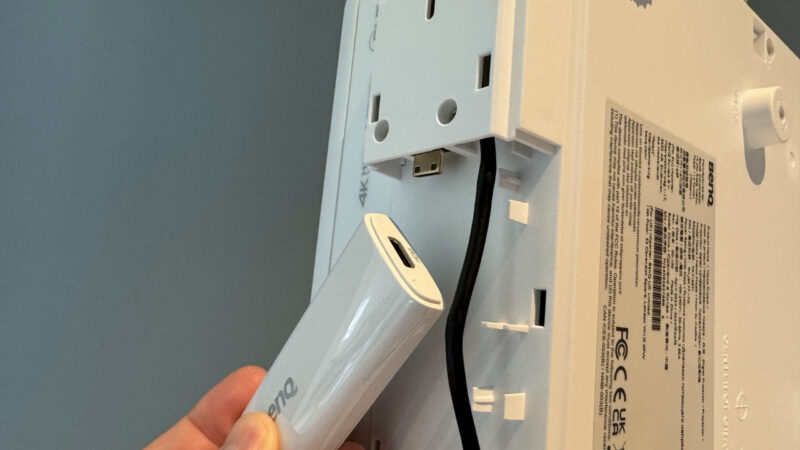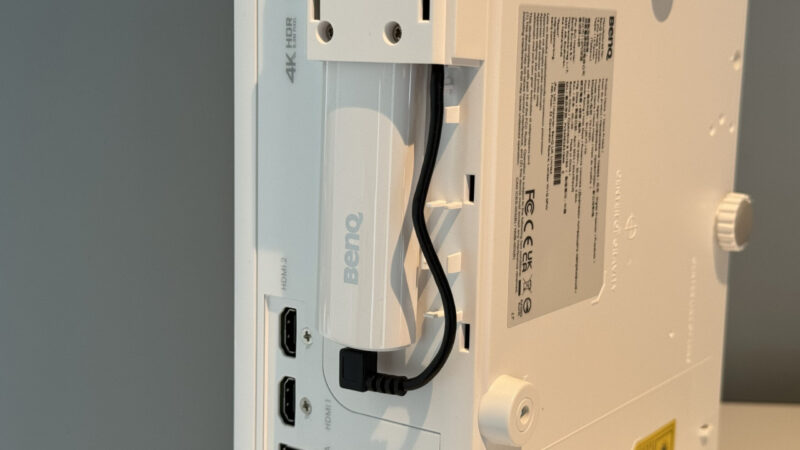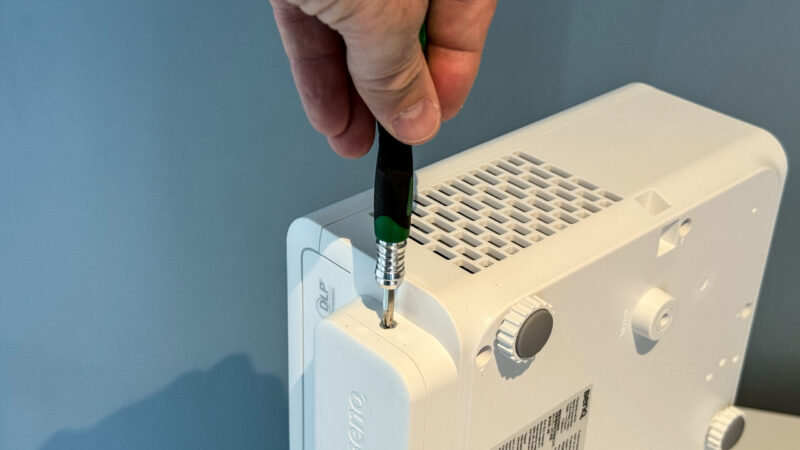The BenQ TK710 STi is a compact projector with high brightness, impressive contrast on paper and 4K resolution. This is achieved by pixel shifting with a 1080p image panel. With a brightness of 3200 ANSI lumens, the projector doesn’t require a completely dark room to deliver a sharp and engaging image. Combined with a claimed 600,000:1 contrast ratio, you’re all set for an impressive viewing experience.
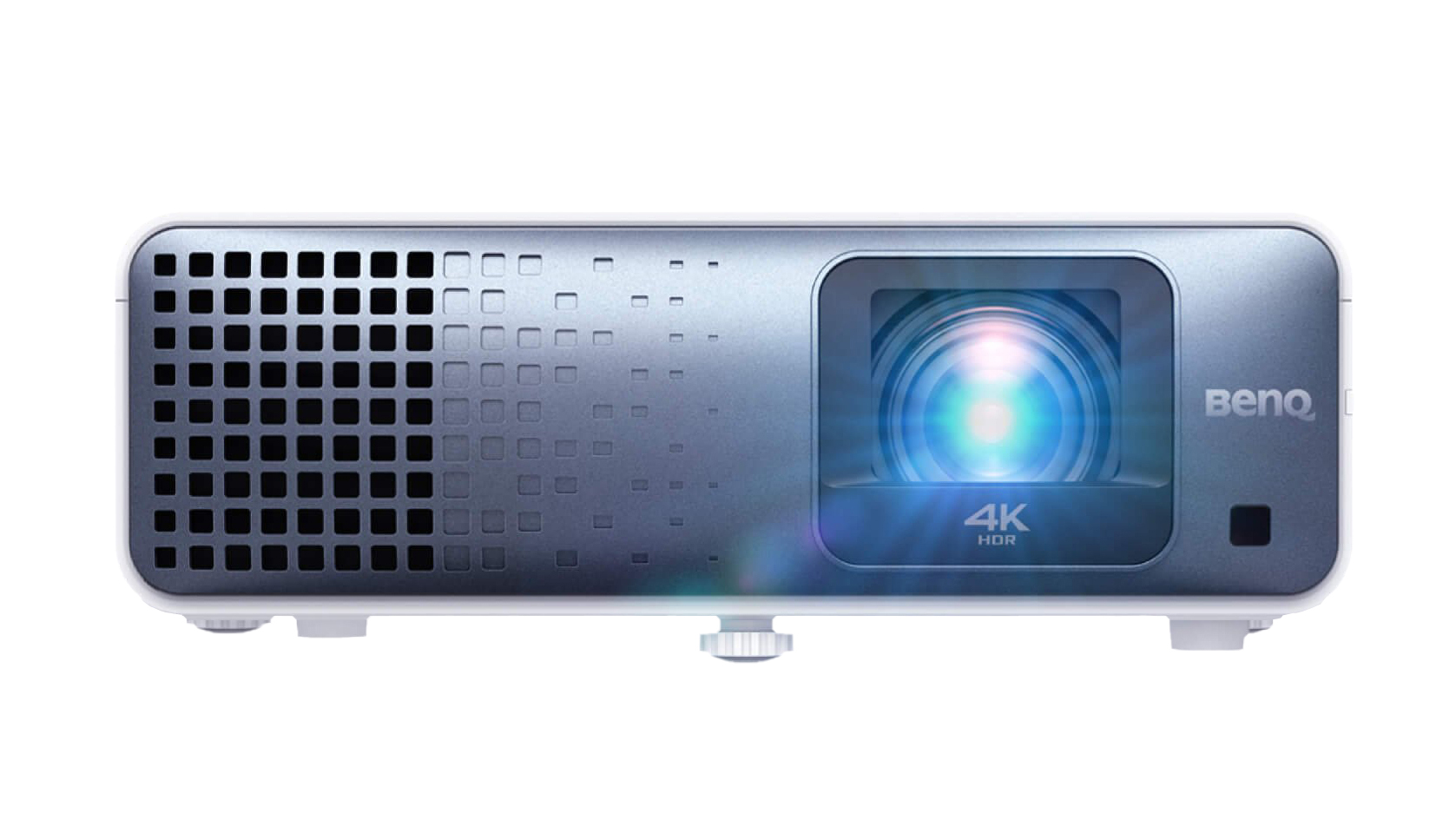
Laser
The light comes from a laser light source that lasts for 20,000 hours in normal mode and 30,000 hours in ECO mode, which equates to around 20 years if the projector is used 3 hours a day. This reduces costs over the lifetime of the projector, compared to having to change the lamp after 3-4 years on a projector with a traditional lamp.
The TK710 STi is closely related to another new projector launched at the same time, the TK710. The STi version stands out by being a short throw projector that can project a 100-inch image from just 1.5 meters. A great advantage for those who want a large image in a small space. The twin projector needs 2.5 meters to provide the same image.
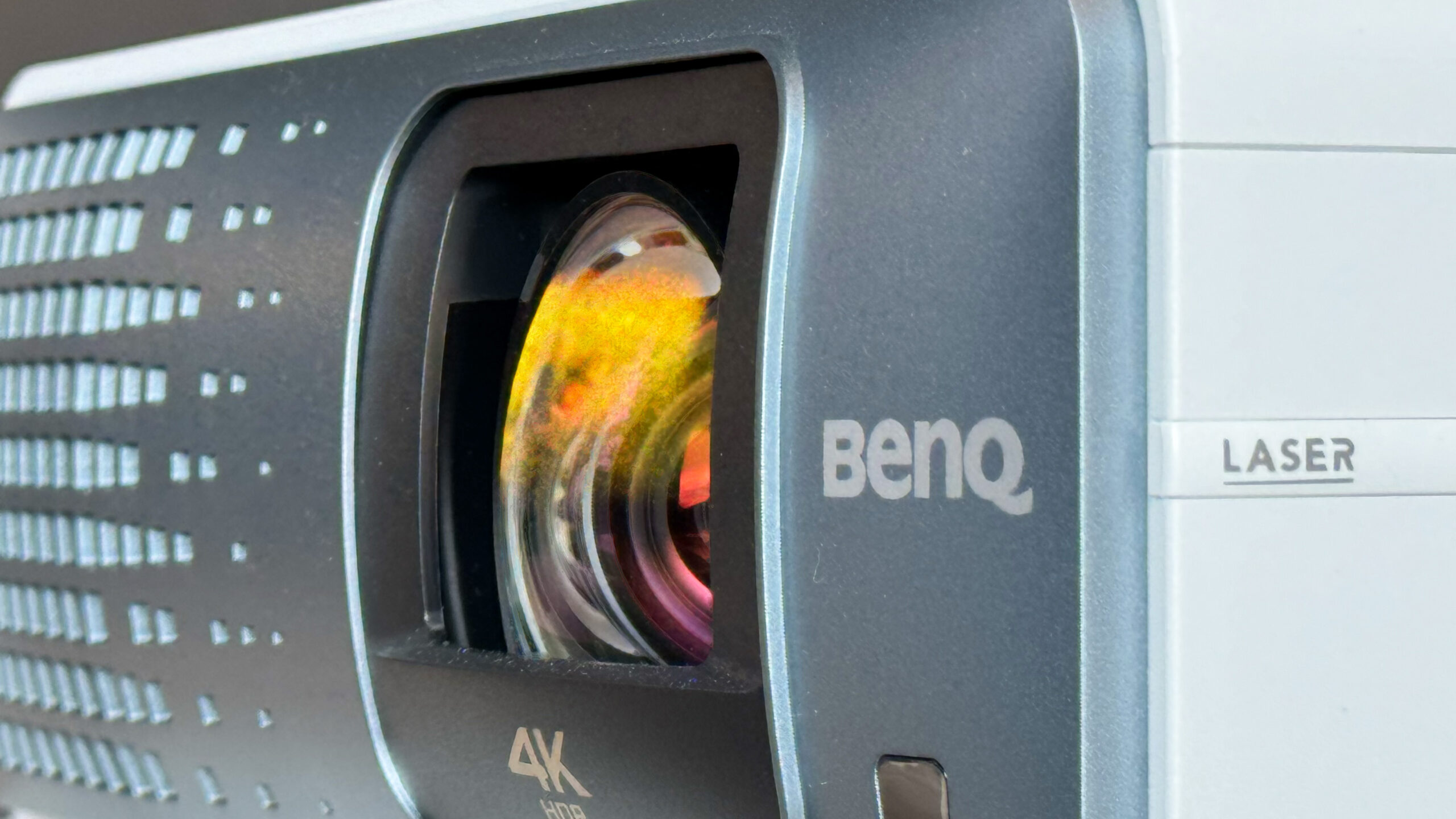
Not only benefits
A distance as short as 1.5 meters requires a sharp curvature of the optics, which therefore almost looks like a hemisphere. This presents some challenges along with the benefits. Firstly, even small irregularities in a canvas can cast shadows on the image. In addition, you will experience so-called vignetting, where the image is less sharp at the edges than in the center.
Finally, it makes lens shifting difficult, if not impossible. Lens shift is usually done by moving the entire motor unit inside to project the image to the side of the center of the optics. With such curved optics, this becomes problematic.
That’s why the TK710 has lens shift, while the TK710 STi does not.
Connectivity and setup
When you unpack the projector, you notice how compact and lightweight it actually is. It can easily be moved from room to room, taken to the cottage or used at events (wedding?) where a large image is needed in a half-lit room. At the same time, there’s nothing about the exterior design that reminds you of something costing almost €2000. At first glance, I would have thought it cost half that.
The projector comes with a simple remote control. It works as it should, but unfortunately it’s not backlit, which makes it useless in the dark. They could have done better there.
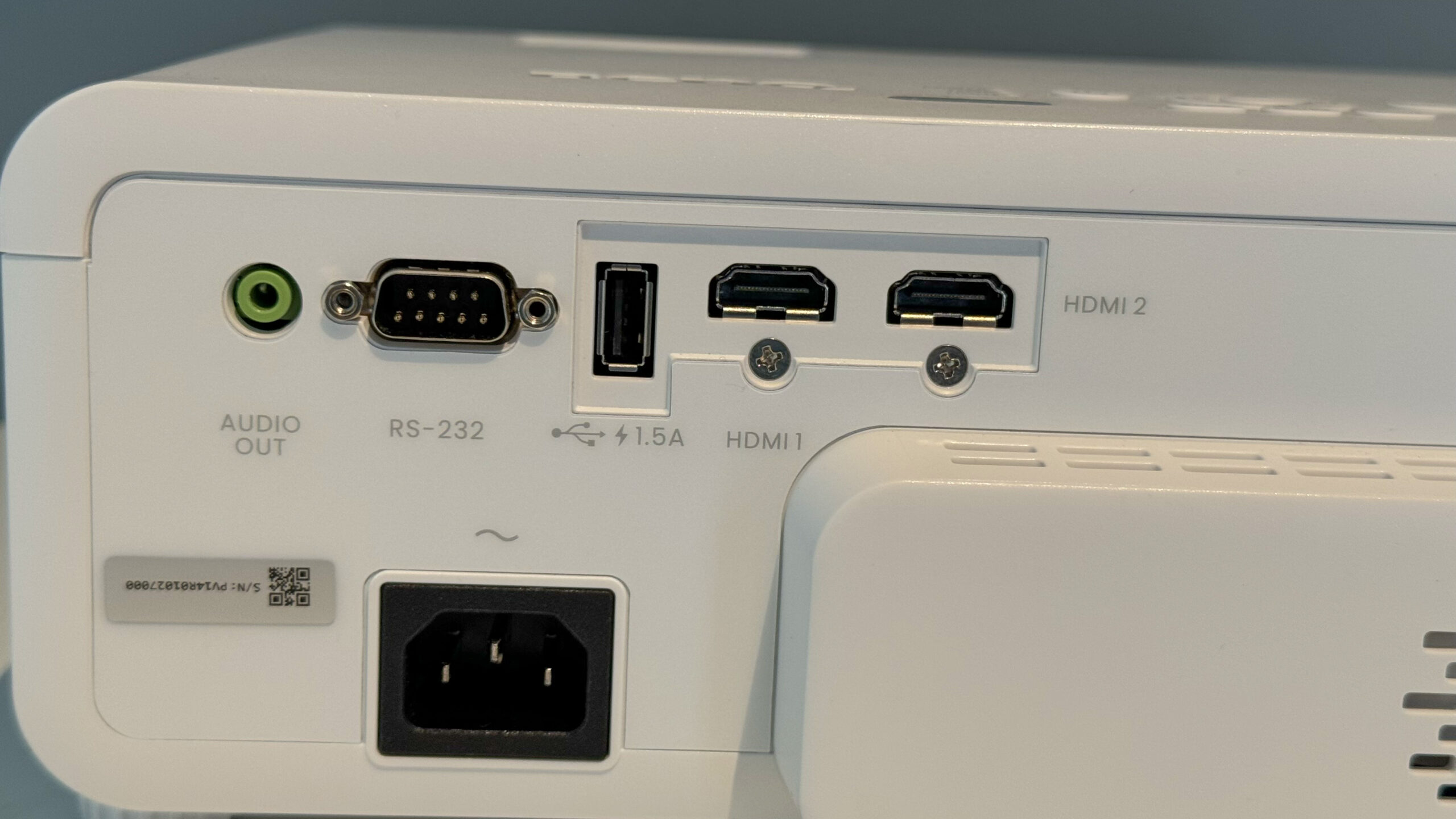
On the back are two HDMI 2.0b ports that support 4K at 60Hz and 1080p at 120Hz. Since BenQ emphasizes the gaming features, it would have been nice to have 4K 120Hz, but it’s probably a cost issue.
One of the HDMI inputs supports eARC, which is a big plus for those who want to send audio to an external soundbar or receiver and get the maximum home theater experience.
The built-in Android TV system (via an included dongle) makes it easy to stream content directly to the projector. This greatly simplifies the user experience and works really well when the projector is connected to a network. If you already have Android TV or Google TV, you will immediately recognize the layout.
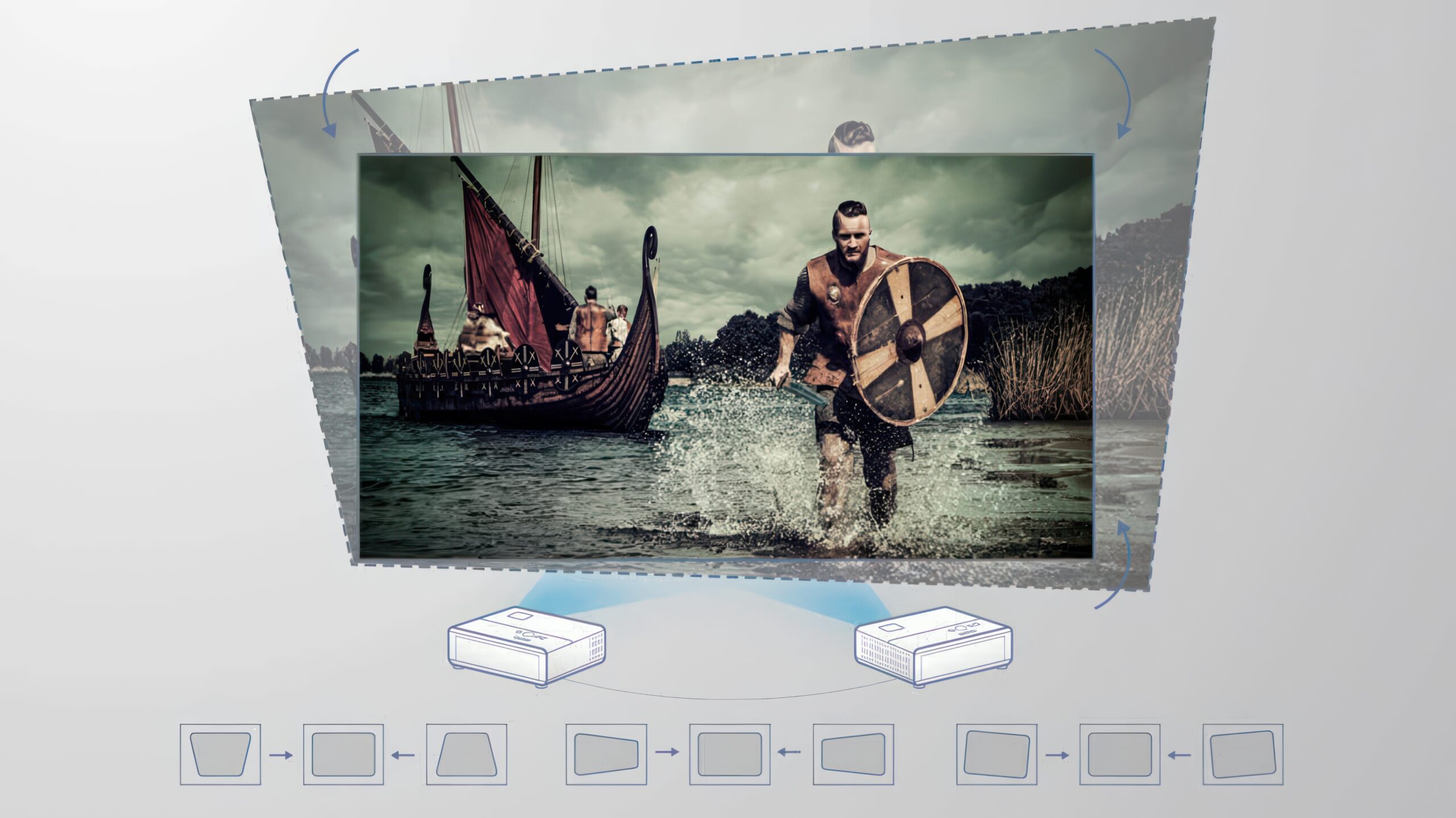
Setup is simple. Just make sure you have the projector on a table level with the bottom edge of the image to be projected or possibly mounted upside down on the ceiling. With no lens shift, you need to pay extra attention to the position of the projector. It does have vertical and horizontal keystone correction of ±40 degrees, which can straighten a skewed image, but at the expense of pixel resolution. So be careful with this feature.
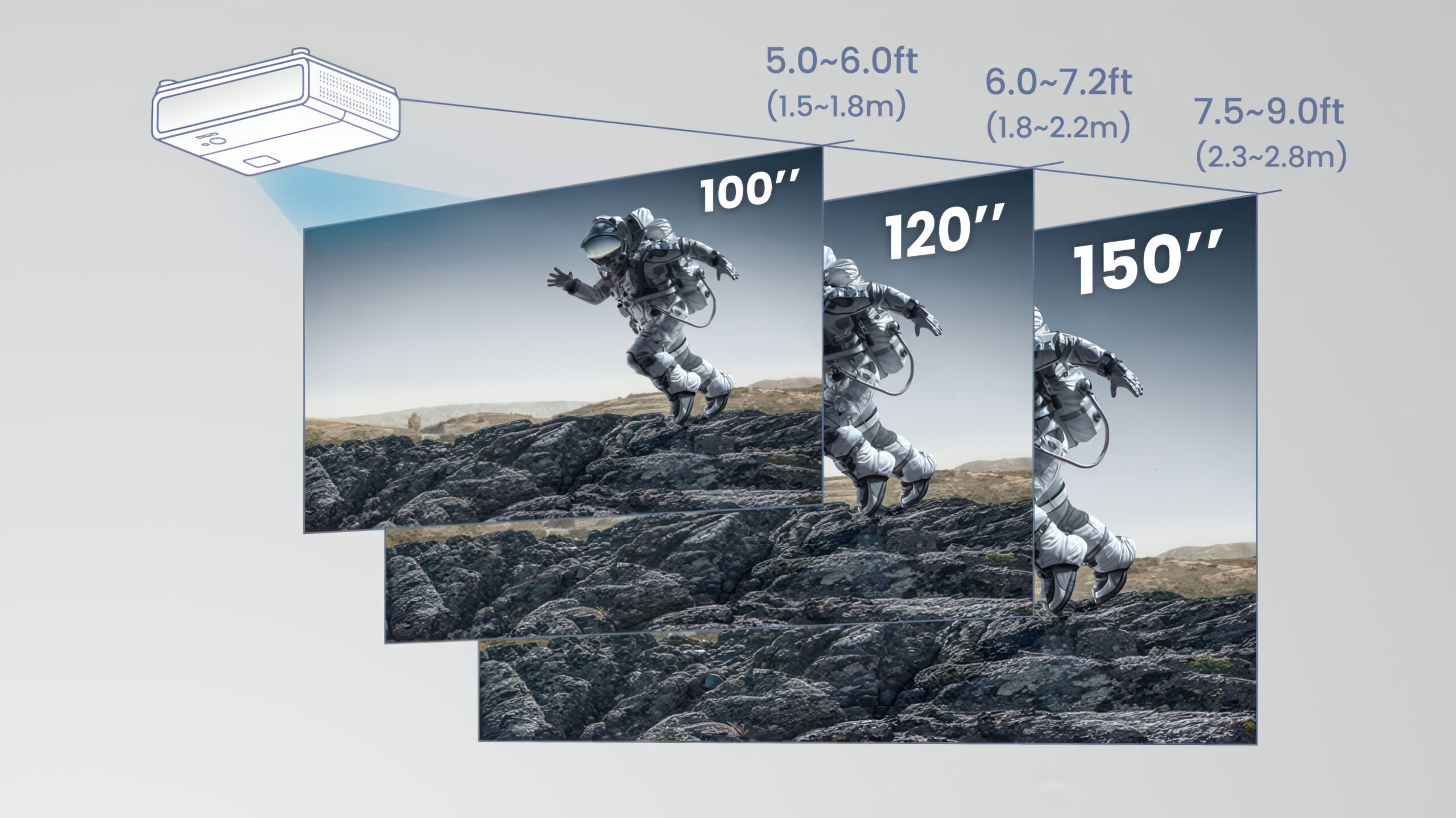
Image quality
With a stated brightness of 3200 ANSI lumens, the TK710 STi delivers even in rooms with moderate daylight. The image is detailed and sharp, and I have no problems watching TV, movies or playing games in a moderately lit living room. It’s even better in the garage with the gate down and the lights off, and best of all in the dark test room at work with DreamScreen V6.
The color space coverage of 95% of Rec.709 is solid and generally provides natural and balanced colors. However, it’s worth noting that in the brightest mode (Bright), color accuracy is sacrificed to achieve maximum brightness. This is a stopgap solution if you need extra brightness in daylight. For the best color results, I recommend sticking to the “Cinema” or “User” modes and possibly adjusting from there. But “Cinema” looks neutral and good with both video content and test images from PC.
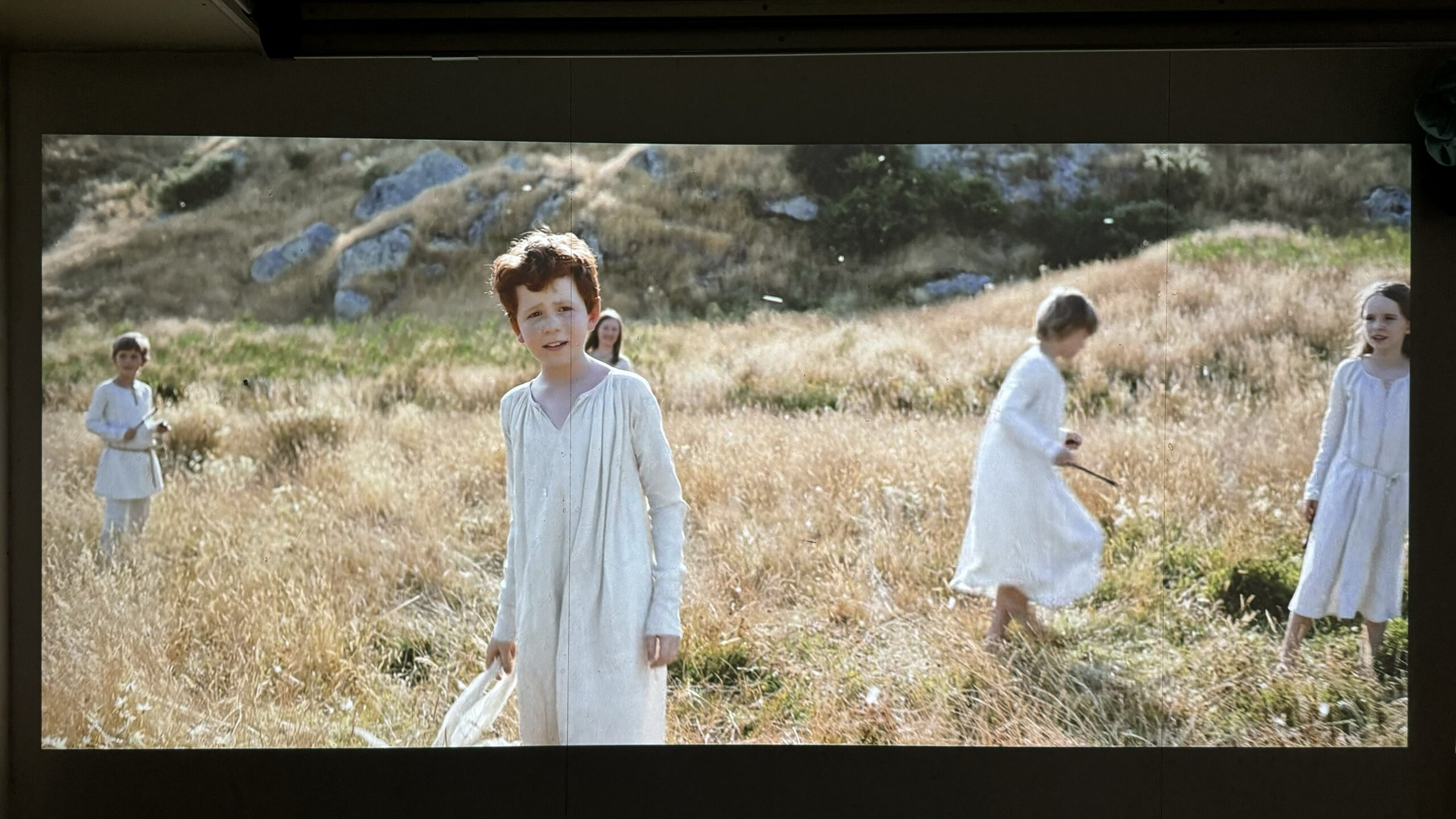
The TK710 STi handles motion well, thanks to the fast DLP technology. Motion is barely blurred and both sports broadcasts and fast action scenes in movies work fine. The rainbow effect or RGB flicker, an artifact of all 1-chip DLP projectors, is not particularly bothersome and hardly noticeable.
The 600,000:1 contrast, on the other hand, is not something I see much of. This is measured with only black image and dynamic iris fully tightened. However, images and video with both light and shadows appear with a rather gray black level. The high brightness partially compensates, but what is otherwise the strength of DLP technology – namely high ANSI contrast – I don’t see here. I suspect the 4K pixel shift is largely to blame.
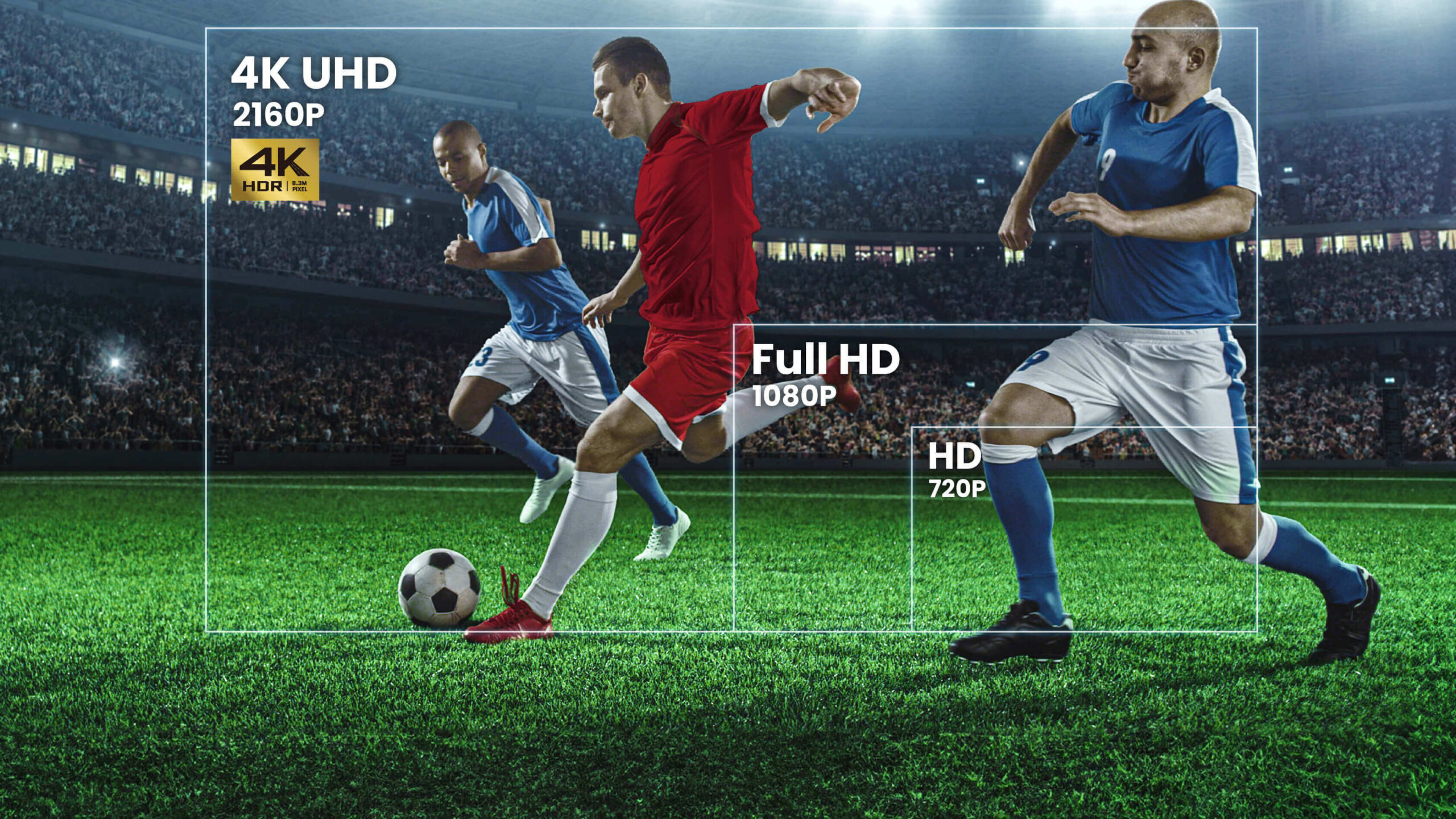
4K with a 1080p panel
A picture panel with 4K resolution is still very expensive. BenQ is among those solving this with a 1080p panel that uses a special lens element to shift pixels alternately in both directions to project four times as many pixels onto the screen.
You actually do get true 4K resolution if you were to count every pixel on the screen. But this comes at the expense of sharpness and contrast. Pixels overlap and you get more stray light inside the projector compared to a projector that has 4K as its base resolution.
Limited HDR effect
The HDR effects on a projector will always be limited compared to a TV, and the BenQ TK710 STi doesn’t make a big deal about the extra brightness in HDR material either. There are other projectors that handle HDR significantly better than this one. For example, I remember the Epson EH-LS800 ultra-short throw projector as better in this discipline.
However, the benefit of the wider color space that comes with HDR is well taken advantage of by the BenQ projector, which still makes the image look more vibrant than with standard dynamic range (SDR) content.
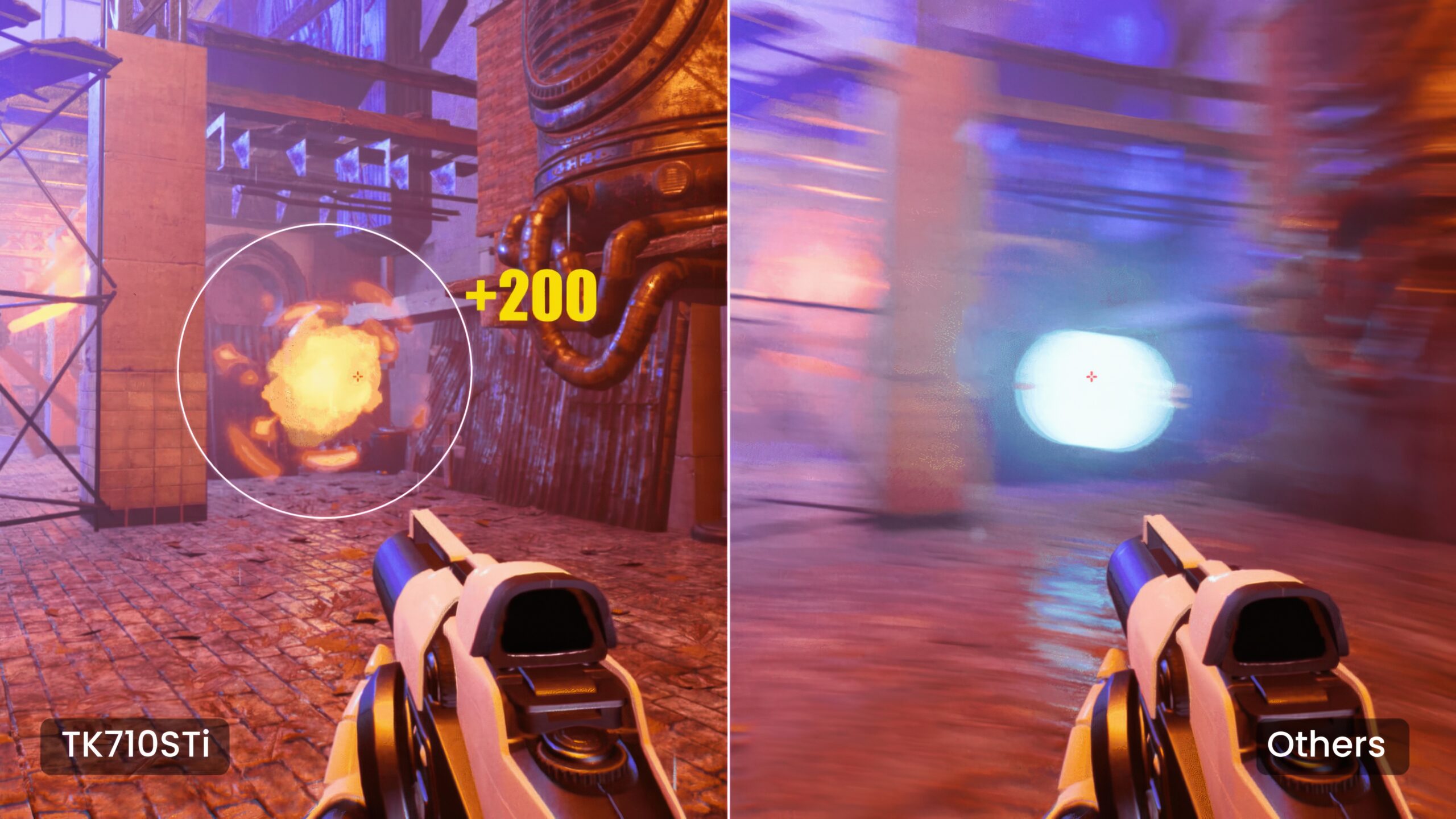
Gaming
For gaming enthusiasts, delay in the HDMI signal (input lag) is a critical factor and here the TK710 STi impresses with just 16.7 ms at 4K and a blazing 4.2 ms at 1080p. This makes it one of the fastest projectors in its class and the reason why BenQ markets it as a gaming projector. In practice, this means that even competitive gamers will experience minimal lag.
I tested the projector with both the PS5 and a high-end gaming PC and the experience was consistently positive. Games like Forza Horizon 5 and Destiny 2 provided a good picture with fast response. The 120Hz support at 1080p is a big plus for those who prioritize fluidity over resolution, but it must be said that you need a pretty cool graphics card to handle more than 60 frames per second with 4K content.
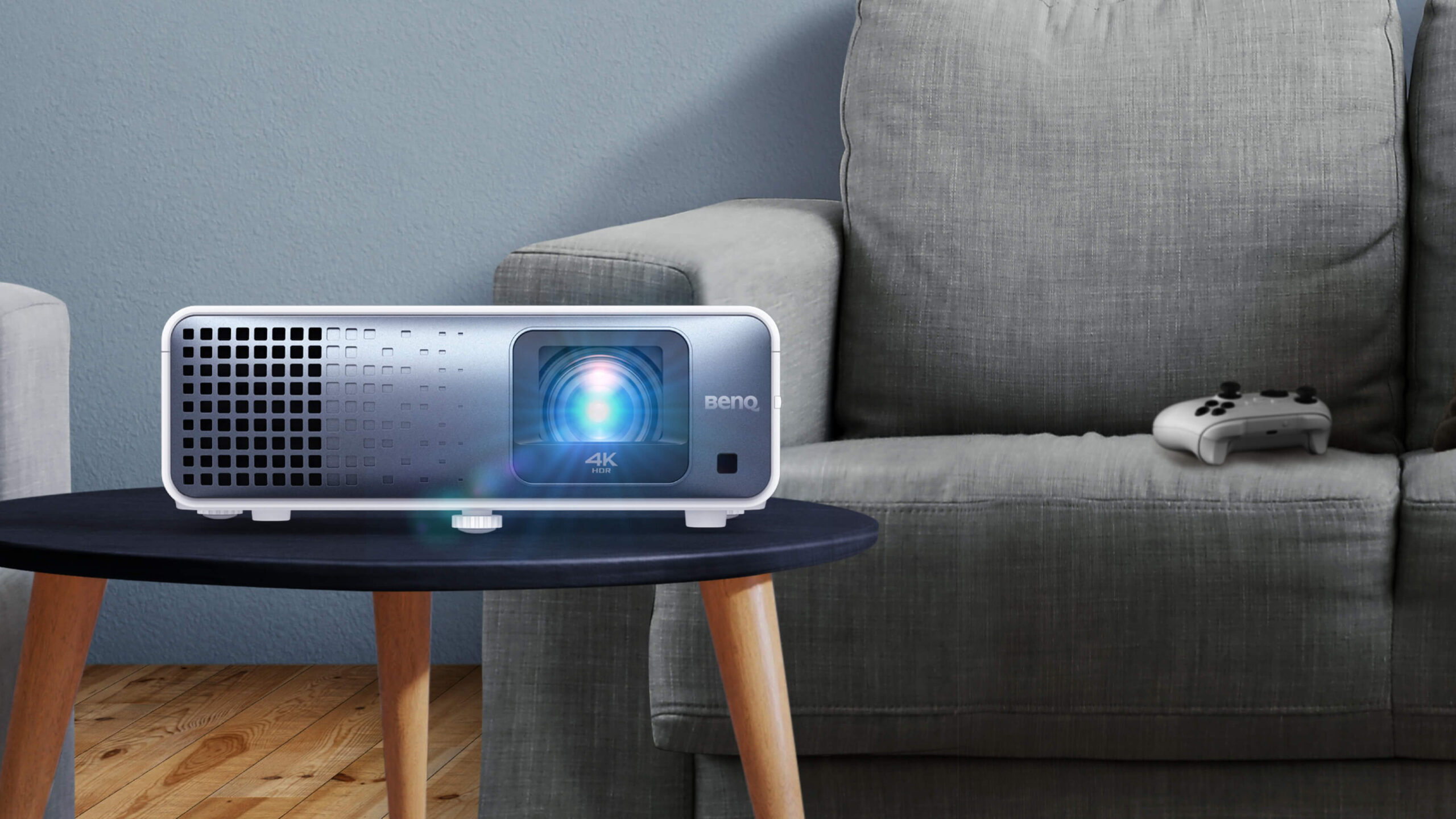
Sound
Although the two built-in speakers of 5W each are excellent for their size, they are only a stopgap solution. They’re sufficient for the kids’ room or a quick soccer game with friends, but you should definitely have an external sound system to match the big picture. The eARC support makes it easy to send high-quality audio to a compatible soundbar or AV receiver.
Noise level
One area where the TK710 STi could have been better is the noise level. While the stated noise level is only 31 dB in normal mode and 28 dB in ECO mode, the high frequency makes it noticeable. Especially in quiet scenes. The short viewing distance also means that the projector often has to be quite close to the seat, which makes the fan extra audible. It’s not unbearable, but it’s something to be aware of if you’re sensitive to noise.
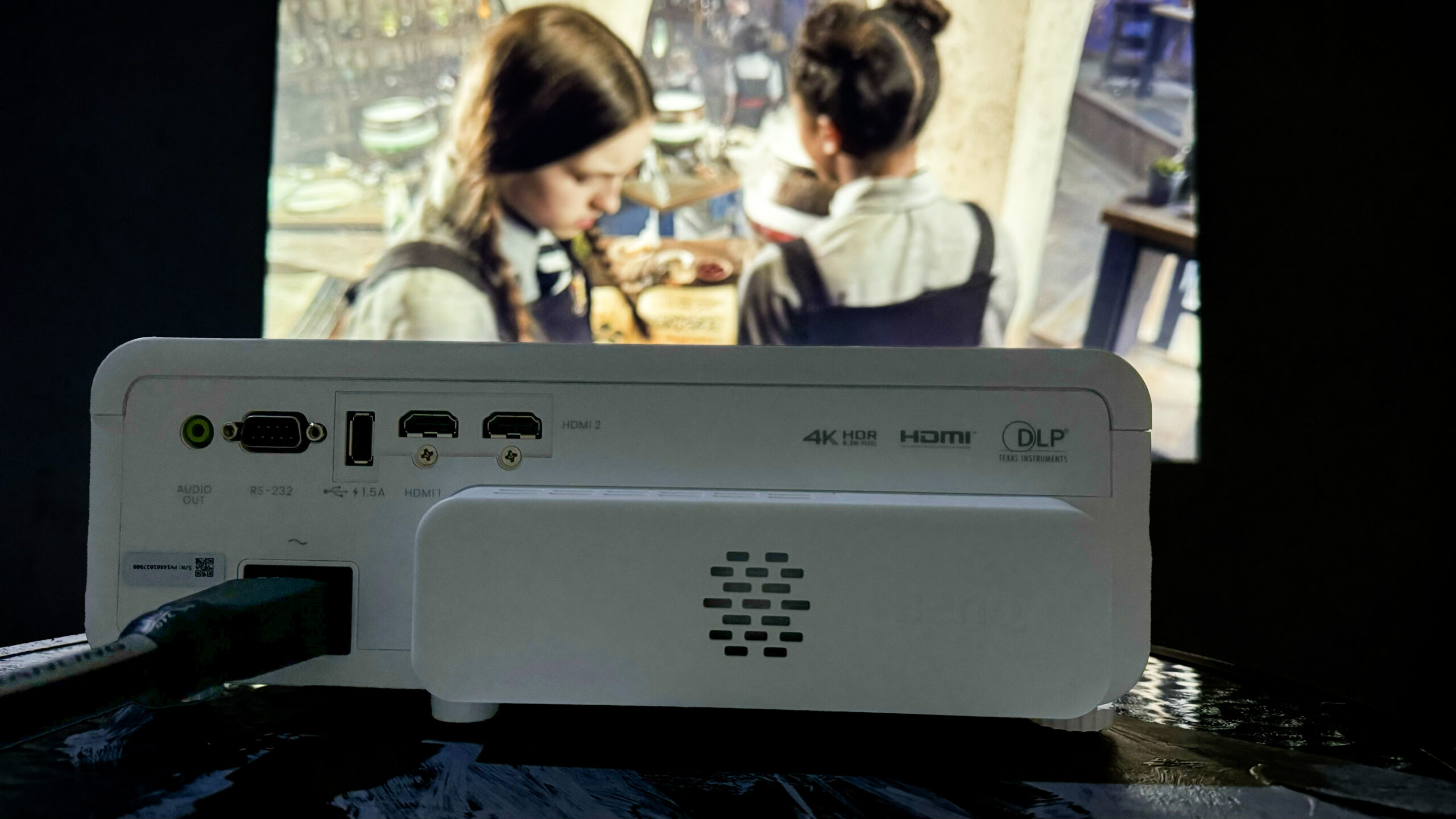
Conclusion
The BenQ TK710 STi is a great short throw projector that delivers on most fronts. It combines high brightness and 4K resolution in a compact format that fits perfectly into modern homes. The short throw distance gives flexibility in placement, while the low input lag makes it a great choice for gamers. Built-in Android TV is also a plus.
However, there are some compromises to be aware of. The HDR effect is not on par with TVs or high-end home theater projectors. The noise level can be distracting for some, and color accuracy suffers slightly in the brightest modes.
At €1800, this is not a cheap product, but given the performance and functionality, the TK710 STi is good value for money for those who want a flexible projector for movies, TV and gaming.
For those who have room for a projector with a longer throw distance, it may be worth considering the regular TK710 model, which can provide even slightly better image quality. But if you need to have the projector close to the wall – but not as close as an ultra-short throw projector – the TK710 STi is definitely a solid choice in its class.

We think
Impressive brightness, neutral colors and a sharp image with no visible pixel structure. Short throw distance for flexible placement. Low input lag for gaming and built-in Android TV. eARC support provides flexibility for home theater. Legitimately high noise level. Very limited HDR effect, especially compared to TVs. Skewed colors in the brightest mode.
1799 €
Specifications
- Technology: DLP with laser
- Resolution: 4K (3840 x 2160)
- HDR: HDR10 and HLG
- Brightness: 3200 ANSI lumens
- Contrast ratio: 600 000:1 (dynamic)
- Color space: 95% Rec.709
- Throw distance: 1.5-1.8 m (100” screen)
- Zoom: 1.2x optical Keystone: Vertical ±30°, Horizontal ±30°
- Inputs: 2 x HDMI 2.0b (4K/60Hz, 1080p/120Hz), eARC
- Smart TV: Android TV (built-in dongle)
- Input lag: 16.7 ms (4K), 4.2 ms (1080p)
- Noise level: 31 dB (28 dB Eco)
- Size: 38.2 x 13.1 x 26.3 cm
- Weight: 4.1 kg
- Web: benq.eu
